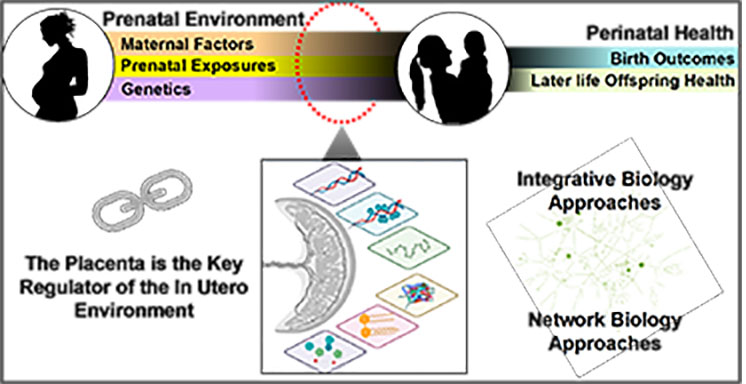Paquette Lab
Pregnancy and the perinatal period represent a transient but crucial time in an individual’s life that has lasting impacts on human health. The placental is a crucial mediator of the in-utero environment, and perturbations to placental function may influence fetal growth and development. Our long goal is to gain insight into the underlying molecular mechanisms linking the in utero environment and birth outcomes by applying innovative network biology approaches and multi-omic data analysis within the placenta.
 The Placenta is the Crucial Link between the Prenatal Environment and Perinatal Health
The Placenta is the Crucial Link between the Prenatal Environment and Perinatal Health
The placenta is an ideal tissue to study perinatal outcomes within the DOHAD framework because it is a primary regulator of the fetal environment during sensitive developmental windows. The placenta acts as a physical and immunological barrier, regulates nutrient and waste transport, and produces endocrine hormones that are transported to the developing infant. Placental function has been linked to multiple outcomes that impact health throughout the lifetime, including airway development, neurodevelopment and obesity. The generation of ‘omics data from the placenta and other biologically relevant tissues across normal and pathological pregnancies provides a rich resource to study molecular changes that occur in pregnancy and their influence throughout the lifetime. Our lab is particularly interested in how fetal sex and maternal race may modify the in-utero environment, and ongoing work in our lab is learning how to integrate these variables in biological networks.
Integrative Network Biology Techniques can address Key Challenges in Perinatal Research
The prenatal environment is influenced by a complex interplay of genetic, environmental and maternal factors. To understand the relationship between the in utero period and perinatal and later life health, we can map how these different factors disrupt physiological functions crucial to development. Network biology and integrative approaches have the unique potential to provide this sort of insight. Network approaches may be particularly useful to serve as a linking mechanism between the prenatal environment and postnatal health because we can use the networks to identify shared molecular links.